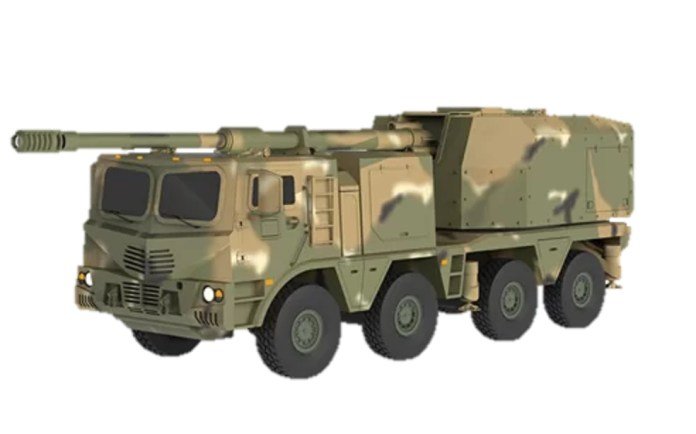
South Korea develops new truck-mounted 155mm howitzer
Hanwha Aerospace introduced a mock-up of its latest wheeled self-propelled howitzer at the 2024 Defense Quality Comprehensive Symposium in Changwon on July 19, according to journalist Kim Minseok.
The new wheeled howitzer, often referred to as a response to market demands for more agile and cost-effective artillery solutions, builds on the success of Hanwha’s K9 self-propelled howitzer.
The K9, a tracked vehicle, has been highly popular and is currently in service with over nine countries, commanding more than 36% of the 155mm howitzer market. In July 2022, Hanwha secured an order to deliver 54 K9 units to Romania, showcasing the model’s global appeal.
Despite its advantages, the K9 has defeated in the UK’s Mobile Fires Platform (MPF) competition in April competition highlighted the need for a wheeled counterpart. The K9’s tracked design offers superior mobility in rough terrains and supports shoot-and-scoot tactics without needing ground spades for stability. However, tracked vehicles are more expensive to maintain and operate compared to wheeled systems, which can travel hundreds of kilometers on roads without additional transport.
The RCH 155, which won the UK competition, boasts the ability to fire on the move and respond more effectively to threats such as enemy artillery and drones. However, Hanwha’s new wheeled howitzer aims to surpass the RCH 155 in several aspects. The vehicle features the K9A2 turret, known for its fully automated loading system, enabling operation with just a two or three-person crew. The new system also retains the K9A2’s impressive rate of fire.
Hanwha’s wheeled howitzer is built on the proven chassis of the KTSSM launch vehicle, known for its mobility in desert and mountainous terrains. The turret is modular, allowing it to be mounted on various platforms to meet different customer requirements. Future configurations might include the longer 58-caliber gun, capable of hitting targets over 70 kilometers away with guided munitions.
One noted difference between Hanwha’s new howitzer and the RCH 155 is the need for a spade to stabilize the vehicle during firing, which may slightly delay the initial shot compared to its German counterpart. However, this design also promises better cost-efficiency, similar to Rheinmetall’s HX3 wheeled howitzer.
Hanwha Aerospace is funding the development of the wheeled howitzer independently but plans to submit it for the upcoming export weapon system development project. If selected, it could significantly boost the company’s competitiveness in the global defense market, similar to the success of the AS21 Redback infantry fighting vehicle.


